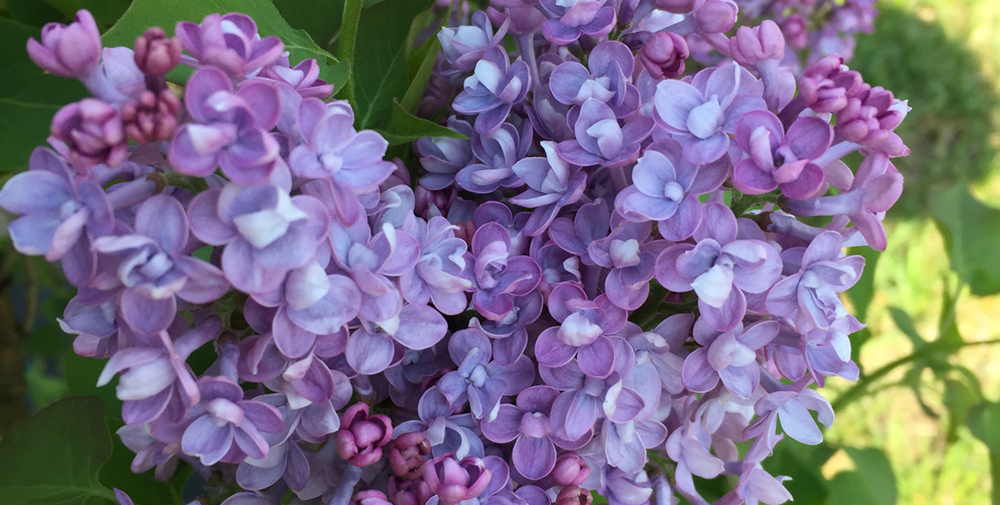
By R. Wayne Mezitt
Among the most familiar and most admired of New England’s spring flowering shrubs are the Lilacs (Syringa). Early Colonial settlers even prior to the 1700’s began the tradition of planting lilacs around their house foundations, helping make them truly their family “homes.”
Familiar to most of us in this region are the popular “common lilacs” (the “French hybrids”) and the slightly-earlier-flowering hyacinth lilac hybrids (S. x hyacinthiflora); lovely examples of these plants grace many regional gardens each year with their fragrance and wide range of color options, starting in early May. Developed in Europe and America, these hybrids and selections rely mainly upon the common lilac (Syringa vulgaris) as a parent.
In addition to the species themselves, some of the best cultivars for this region, readily available at garden centers, are ‘Betsy Ross’ (fragrant white flowers), ‘Ludwig Spaeth’ (fragrant dark purple), ‘Sensation’ (pin-striped purple), Primrose (Pale yellow flowers) and ‘Pocahontas’ (early fragrant purple). Most of these common and hyacinth types will grow to 12 feet or more if left to grow naturally without pruning.
Some compact-growing and later-flowering cultivars, opening their flowers just as the blossoms of common types are fading, have recently become available. Look for S. meyeri ‘Palibin’ (lavender), ‘Miss Kim’ (blue-lavender flowers, reddish fall foliage) and ‘Tinkerbelle’ (pink), all of which feature dainty fragrant flowers, rounded leaves and a denser form that matures at only 6 to 8 feet high and wide. The new Bloomerang® cultivars are dwarf-growing in a range of colors; they’re repeat-flowering in late summer, trouble free and ideal for smaller garden settings.
Of significantly larger stature is the Japanese tree lilac, S. reticulata, growing 20 to 25 feet high at maturity. This is a pest free, low maintenance tree that grows more attractive with the years. The cultivar ‘Ivory Silk’ features a profusion of upright panicles of privet-scented ivory-white flowers in early June. Its shiny reddish bark, artistic branching and prominent seed pods in autumn add to the appeal, and it is sufficiently climate tolerant to grow anywhere in New England. Both the Japanese tree lilac and the compact ‘Miss Kim’ are winners of the prestigious Worcester Horticultural Society’s Cary Award.
All lilacs prefer full sun and organic soil with neutral acidity, although they perform well in most any New England soil. They do not appreciate soggy soil conditions, and if air circulation is limited, their leaves may develop whitish mildew spots during humid weather. Some cultivars tend to be more resistant to leaf problems.
Be sure to understand their growth characteristics before you plant lilacs in your yard, and give larger types ample space to thrive. Lilacs are tough, climate tolerant plants, and most require hardly any maintenance. And this is the perfect time of year to see them at their best and select the types that suit your own garden.
About the Author
Wayne Mezitt is a 3rd generation nurseryman, a Massachusetts Certified Horticulturist, now chairman of Weston Nurseries of Hopkinton, Chelmsford & Hingham MA, and owner of “Hort-Sense”, a horticultural advisory business. He currently serves in various capacities on several horticulturally-related organizations, including the Massachusetts Horticultural Society at The Gardens at Elm Bank in Wellesley MA, and chairman for the Massachusetts Invasive Plant Advisory Group (MIPAG).









